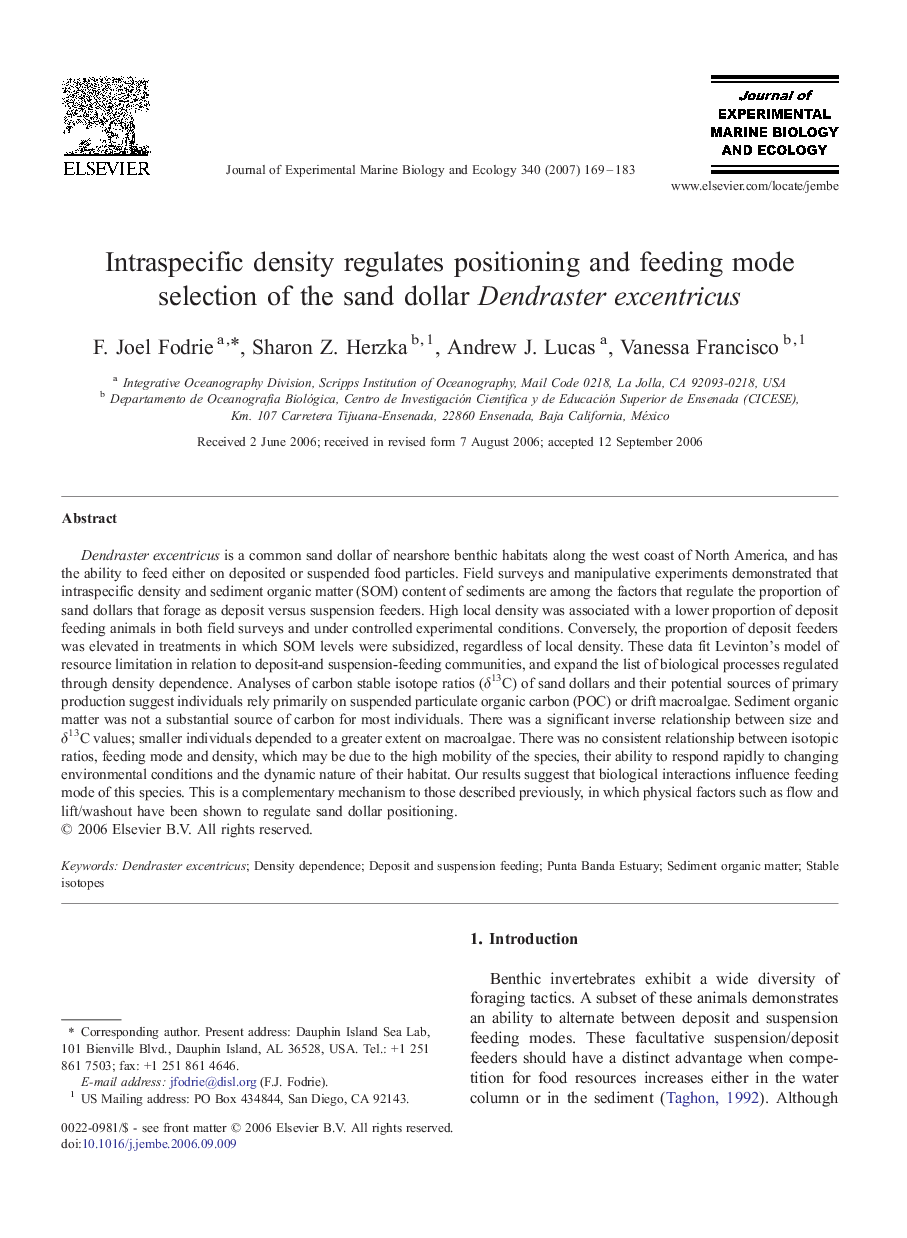| کد مقاله | کد نشریه | سال انتشار | مقاله انگلیسی | نسخه تمام متن |
|---|---|---|---|---|
| 4397871 | 1618492 | 2007 | 15 صفحه PDF | دانلود رایگان |

Dendraster excentricus is a common sand dollar of nearshore benthic habitats along the west coast of North America, and has the ability to feed either on deposited or suspended food particles. Field surveys and manipulative experiments demonstrated that intraspecific density and sediment organic matter (SOM) content of sediments are among the factors that regulate the proportion of sand dollars that forage as deposit versus suspension feeders. High local density was associated with a lower proportion of deposit feeding animals in both field surveys and under controlled experimental conditions. Conversely, the proportion of deposit feeders was elevated in treatments in which SOM levels were subsidized, regardless of local density. These data fit Levinton's model of resource limitation in relation to deposit-and suspension-feeding communities, and expand the list of biological processes regulated through density dependence. Analyses of carbon stable isotope ratios (δ13C) of sand dollars and their potential sources of primary production suggest individuals rely primarily on suspended particulate organic carbon (POC) or drift macroalgae. Sediment organic matter was not a substantial source of carbon for most individuals. There was a significant inverse relationship between size and δ13C values; smaller individuals depended to a greater extent on macroalgae. There was no consistent relationship between isotopic ratios, feeding mode and density, which may be due to the high mobility of the species, their ability to respond rapidly to changing environmental conditions and the dynamic nature of their habitat. Our results suggest that biological interactions influence feeding mode of this species. This is a complementary mechanism to those described previously, in which physical factors such as flow and lift/washout have been shown to regulate sand dollar positioning.
Journal: Journal of Experimental Marine Biology and Ecology - Volume 340, Issue 2, 23 January 2007, Pages 169–183